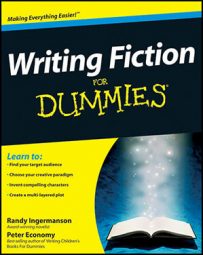To better understand a character’s history, or backstory, many fiction writers create entire histories for their characters. When developing a character for a story, determining the character’s personal history first is critical. You must understand where your character comes from, or you’ll never understand what your character wants or why he acts the way he does. And if you don’t know, neither will your readers.
You don’t have to figure out your character’s history all at once, but it helps to have a good idea of it before you sit down to write; otherwise, your character may end up changing halfway through writing, and you may end up having to rewrite your entire story — or end up with a story different from what you intended.
To set up your character’s history, just start writing — fast. Get it all down. It doesn’t have to be pretty. You can clean up the history later, but your character is spilling his guts for you now, so pay attention. Here are some tips on what to include:
Describe your character. What does he look like? Write down his birthday, eye color, hair color, and anything else that matters to you and possibly your reader.
Discuss your character’s early life. Where was your character born? Who are his parents (and grandparents if you know about them)? What are his first memories? What’s the worst thing that happened to him in kindergarten?
Write about the horrors of school. What was your character’s favorite subject, and what was his most hated? Did he do well in high school, or did he skate through? Was he a geek, a jock, a heart-throb, a nobody, or what? Did he date, and if so, what was she like? Did he dump her, did she dump him, or did they get married?
Note what your character did as he came to adulthood. Get it all out: the good, the bad, and most especially the horrible. What traumatized him? Who were his friends and his family? Who were his enemies?
You may want to interview your character. Ask him what he’s learned. How does he see his current situation? Most importantly, what would he like to change about his life? What would he like to do but can’t? You need to know, because this sort of information determines what his future will look like.
A little goes a long, long way with your character’s history. In your story, dole out the character history in little snippets, leaving the reader curious, wanting to know more. It’s far better to have the reader want more history than to want less. If you throw too much history on the reader early in the book, you may smother the story.

